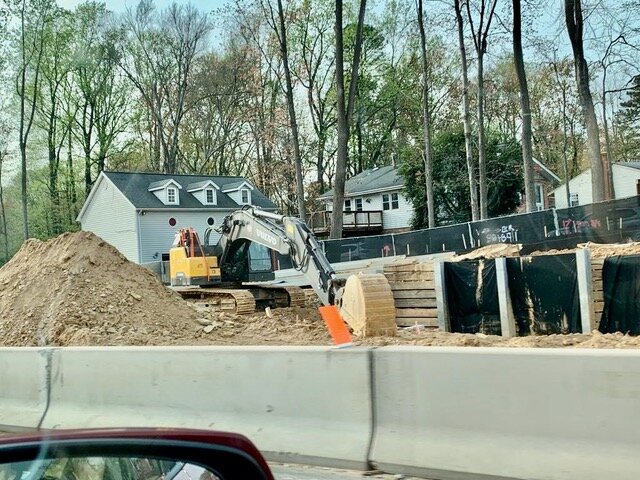Peter Franchot, the deciding vote on the Board of Public Works (BPW), recently said the I-495/I-270 toll-lane project, the biggest Public Private Partnership (P3) in the world, is basically just an experiment to “see how it goes” and see if there’s “any real uproar over the tolls.” Follow the Action Item below to remind Mr. Franchot of his responsibility to protect Marylanders, not international developers. Then read the good news about Congressman Anthony Brown’s appeal to U.S. Department of Transportation (DOT) Secretary Pete Buttigieg to stop the toll-lane project’s end run around federal environmental law, followed by a cautionary tale about P3 construction in Virginia.
Action Item
Write Comptroller Franchot care of Emily Gontrum at egontrum@marylandtaxes.gov and/or call Comptroller Franchot at 301-332-1961. This is his cell phone and he said in a recent interview that he invites the public to contact him at this number and leave a voice mail or text.
The Maryland Department of Transporation (MDOT) won’t complete the environmental review process until next fall. Tell Comptroller Franchot that he and the BPW must delay the vote on the first toll-lane contract until the Final Environmental Impact Statement (FEIS) is completed. An FEIS is essential to assess the true cost to taxpayers and the impacts on communities and the environment. Until the FEIS is released, it is impossible to truly know the effects of many key features of the proposed P3 project.
The next steps in the approval process for the first contract, the Developer Phase 1 P3 Agreement, include: review and approval by the Maryland Transportation Authority (MDTA) Board, review -– but without approval authority -- by the budget committees of the Maryland General Assembly, and then a vote by the BPW.
If approved by the BPW, the Phase Developer contract would be awarded and Accelerate Maryland Partners, the awardee, notified to proceed with the preliminary design and some form of collaboration with community stakeholders. There are many fiscal concerns about this project that will affect the State and Maryland taxpayers. Read more in the Dontwiden270.org April 5, 2021 newsletter.
Congressman Urges Federal Review of the I-495 and I-270 Project
U.S. Representative Anthony Brown from Prince George’s County and a member of the U.S. House Transportation and Infrastructre Committee, sent a letter on February 2 to DOT Secretary Pete Buttigieg. According to Rep. Brown’s press release, the letter detailed concerns with Maryland’s I-495 & I-270 Managed Lanes Study. He specifically identified the following issues for consideration:
Lack of Transit Alternatives and Investment
Outdated Approach
The Impact of COVID-19 and the Future of Commuting
Incongruent National Environmental Policy Act (NEPA) process
The Congressman encouraged the DOT to consider the implications of the project on the region and reevaluate the federal government’s role. The U.S. DOT has responsibility for oversight of interstate highways and is required under the NEPA Act to approve the FEIS.
Rep.Brown’s letter can be found here.
For more information, see Congressman Urges Buttigieg to Review I-495/I-270 Project.
Rep. Brown and Montgomery County Council President Tom Hucker held a press conference on April 12, including discussion of transportation priorities. They affirmed that the State needs the right mix of roads and rails and not just expansion of road capacity.
Why We Are Fighting to Prevent What’s Happening on I-66 in Virginia from Happening to Us
Tolls have existed for centuries, initially levied on those travelling by foot, horseback, or wagon and continued with automobiles. Currently, about 29 states have toll roads, with price-managed toll lanes in 11 states. Most roads are built with funds raised from taxes. However, in recent years, states have increasingly looked to private companies to build toll roads and capture the tolls for profit.
The construction of new toll lanes on I-66 in Virginia is wreaking havoc on local communities and raises concerns about the possibility of similar consequences in Maryland if the I-270 managed lane project goes forward. The following depicts current construction on I-66 and demonstrates why we must prevent this from happening in our communities.
I-66 Inside the Beltway Express Lanes
The I-66 “Inside the Beltway Express Lanes” cover 9 miles of I-66 from I-495 to US Route 29 in Rosslyn. This section began operation in December 2017, operating under dynamic tolling with tolls varying depending on traffic congestion. Its express lanes operate at rush hour with no maximum toll. Tolls have been as high as $46, a totally inequitable price. The Virginia Department of Transportation owns and operates this corridor.
Transform 66 Outside the Beltway Express Lanes Project
In December 2016, a 50-year P3 contract was awarded to I-66 Express Mobility Partners (lead project developer, Cintra) to design, build, and operate I-66 from I-495 to Gainesville. This project will extend I-66 another 22.5 miles west from the Capital Beltway. Early construction activity began in December 2017 with major construction beginning in spring 2018. The express lanes are scheduled to open in December 2022. Two dynamically tolled express lanes will operate alongside three untolled general purpose lanes per direction.
Recently, a Montgomery County resident drove near the area where construction is ongoing for the I-66 “Outside the Beltway Express Lanes” project. She reported the following:
I happened to drive on Route 66 in Virginia all the way towards the end, near the Front Royal exit. It was shocking, truly shocking, to see the construction as they are adding even more lanes to I-66. The amount of construction vehicles, road construction materials, massive hills of dirt, pipes, etc., etc. was overwhelming. I’ve never seen anything quite like it. The construction and new barrier walls being constructed are literally in people’s backyards. Or up against their garages, houses, apartment buildings, pools, walking paths, and parking spaces - within a few feet. There was absolutely no buffer zone between the soon to be new lanes and personal or county property.
After reading this description, a Rockville resident drove over to photograph the construction area. The photos depict what life is like for those who live in the shadow of this project. We can’t let this happen here!
Must Read Recent Articles
Opinion: Protecting a Piece of Md. History From the State’s Beltway Expansion Plan, Maryland Matters, April 9, 2021
Md. Sierra Club: Will the Senate Co-Own Hogan’s Highway Boondoggle?, Maryland Matters, April 9, 2021
Plan to widen congested Capital Beltway fuels fierce debate, Bay Journal, April 5, 2021
Note: Key articles about the highway widening project dating back to August 2018 can be found on our website at https://dontwiden270.org/archives,



